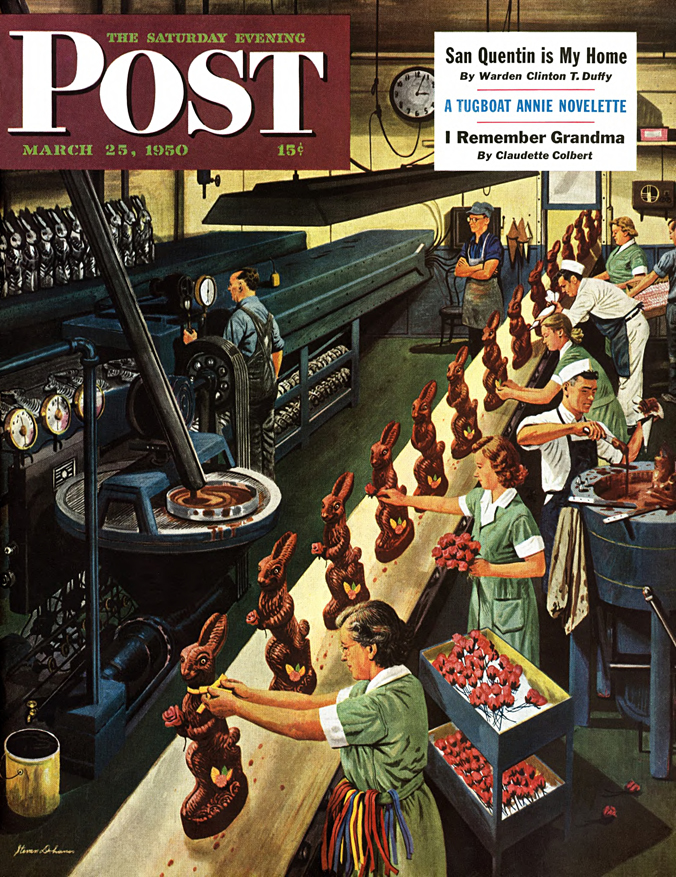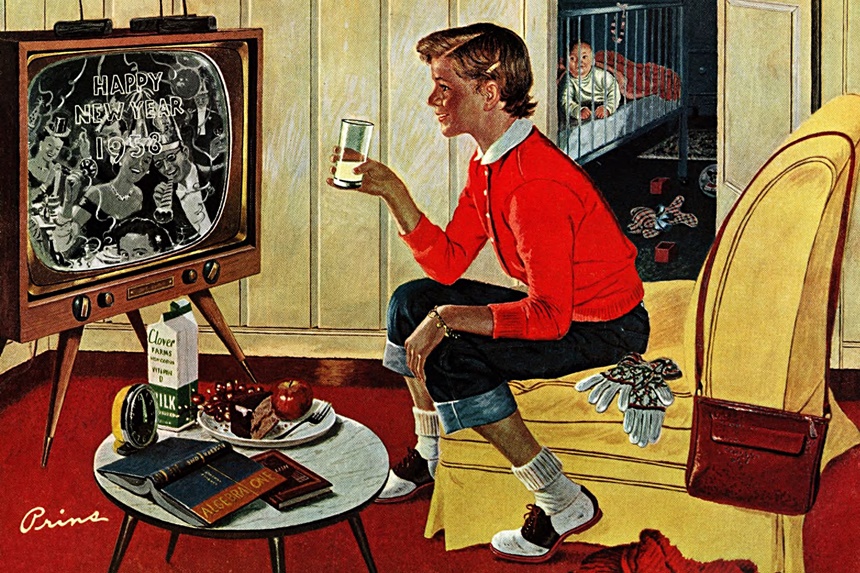Babysitting? You Might Need a Master’s for That
I don’t have kids so I haven’t thought of babysitting in a long time. I do remember that it was something that teens did – often teen girls but not always – to make money and/or help out. They were usually friends or neighborhood kids who babysat (is that a word?) when the parents went out and a relative couldn’t watch the youngsters.
Apparently, that has changed. Parents now don’t want inexperienced teens watching their kids; they’re looking for older “applicants” with a solid résumé and experience and maybe even … a master’s degree?
To be honest, I don’t think I would hire a teen to watch my kids either. I’d probably worry too much. I wouldn’t ask for a degree in child care (not even an associate’s) or ask them not to have social media accounts (and I’m going to assume they won’t be drinking), but I’d rather rely on a relative or a good friend. If I did hire a teen it would have to be an especially mature teen that a relative/friend knew and vouched for wholeheartedly.
Do teen girls even want to babysit anymore, or do they want “real” jobs so they can buy smartphones? It seems the job of teen babysitter is something from another time, like handwritten letters, black and white television, and doctors making house calls.
Fake Uniforms and Inflatable Tanks
I thought I knew pretty much everything there is to know about what happened during World War II. At least the major events. But last week many of us found out that there was a secret U.S. team, called the Ghost Army, that used special effects, fake uniforms, and even inflatable tanks (!) to fool the enemy. It was kept secret for decades. The seven surviving members were honored with the Congressional Gold Medal.
There was a documentary made about the group in 2013, and Ben Affleck will reportedly write and star in a feature film.
The First Magazine About Television
I came across something randomly the other day. The first magazine about television – titled, appropriately enough, Television – was a British magazine that came out in … 1928!
Horrifying Food Photo of the Week
This is from Martha Stewart’s Instagram. Someone in the comments called it a “Chobster.”
RIP Joe Lieberman, Ron Harper, Lisa Lane, Daniel Kahneman, and Richard C. Higgins
Joe Lieberman was a Democratic senator from Connecticut for 24 years and was Al Gore’s VP pick for the 2000 presidential election. He ran for president himself in 2004. He died Wednesday at the age of 82.
Ron Harper starred on such TV shows as Planet of the Apes, Garrison’s Gorillas, Land of the Lost, 87th Precinct, The Jean Arthur Show, and many soaps. He died last week at the age of 91.
Lisa Lane was the first chess player to be on the cover of Sports Illustrated. She died in February at the age of 90.
Daniel Kahneman was a psychologist and an expert at behavioral economics. He won the Nobel prize for economics in 2002 and is the author of the classic book Thinking, Fast and Slow. He died Wednesday at the age of 90.
Richard C. Higgins was one of the last survivors of the attack on Pearl Harbor. He died last week at the age of 102.
This Week in History
Exxon Valdez Oil Spill (March 24, 1989)
The tanker hit a reef in Alaska’s Prince William Sound and spilled over 10 million gallons of oil, affecting 1,300 miles of coastline.
This Side of Paradise, F. Scott Fitzgerald’s First Novel, Released (March 26, 1920)
Yes, Fitzgerald wrote for the Post. In fact, we helped create The Great Gatsby.
This Week in Saturday Evening Post History: “Chocolate Easter Bunnies” by Stevan Dohanos (March 25, 1950)

Is it weird that when I was a kid I liked the hollow bunnies? The big solid ones were too overwhelming.
Easter Dinner
There’s more to Easter than rabbit-shaped chocolate treats. Like this Classic Glazed Ham from Food Network and these Buttermilk Biscuits from Bon Appétit. The Pioneer Woman has these Easy Candied Carrots, while Southern Living has a Corn Pudding Casserole.
For dessert, make something that isn’t chocolate, like this Perfect Banana Pudding from Delish.
By the way, here’s a collection of the Easter-themed covers we’ve had over the years.
Next Week’s Holidays and Events
April Fool’s Day (April 1)
Serve your dinner guests a Chobster. It will be hilarious!
National Card and Letter Writing Month Begins (April 1)
It’s great that there’s an entire month devoted to this, but you really should be doing it the other 11 months of the year, too.
Become a Saturday Evening Post member and enjoy unlimited access. Subscribe now




Comments
That was a fascinating and informative article about the early days of television. It’s amazing to think TV has been around for nearly a century!
Interestingly enough, the 1st person to appear on U.S. television was future U.S. President Herbert Hoover on April 7, 1927, where an audience comprising several dozen newspaper reporters and officials of Bell Telephone Laboratories gathered in New York City to witness the first demonstration of American television. The live picture and voice of then Secretary of Commerce Hoover were transmitted over telephone lines from Washington DC to more than 200 miles north to an auditorium in midtown Manhattan. Hoover would be elected President of the U.S. the following year.
“Today we have, in a sense, the transmission of sight for the first time in the world’s history,” Hoover said, as he looked into a small black box and spoke into a telephone mouthpiece. “Human genius has now destroyed the impediment of distance in a new respect, and in a manner hitherto unknown.”
Although the audio portion was two-way, only those in New York were able to see Hoover on a rectangular television screen measuring approximately 2 × 2 ½ inches as he spoke to Walter S. Gifford, president of the American Telephone and Telegraph Company (AT&T).
A New York Times front-page article that was published the next day in response to the demonstration described the transmission “Like a Photo Come to Life” but also cautioned “Commercial Use in Doubt.”
Lots of good information on the Ghost Army in your comments, Bob Taylor. Let’s see how things go with Ben Affleck’s film. As long as he stays away from the pyro-fetished Michael Bay, it could be good. Definitely a story worth telling, probably best as a documentary though; but we’ll see at some point.
The television magazine story here is fascinating. 1928. A full 25 years before the TV Guide we are/were familiar with. TV probably would have come into prominence much sooner if it hadn’t been delayed by The Depression and World War II. I prefer Martha’s photos beneath the “Chobster” a lot more.
Those BIG chocolate bunnies on Dohanos’ beautiful Post cover would be very expensive now; especially if solid chocolate. If received as a gift, it would have to go under the knife then refrigerated in small pieces in fridge containers, with some being brought in to work for sharing.
I’m going to be sending some hand written letters in April. Thanks for the (now vintage) link on it. Timeless and timely. No Easter get togethers on the 31st, Bob. Some have COVID, again, so that’s out. Besides, it’s cold and rainy out this weekend anyway.
I enjoyed the article about the Ghost Army. I hadn’t known about that, but I had known that the Allies maintained a huge ghost army base in southeastern England in the months before the D – Day invasion. It was “commanded” by no less than General George Patton. The Allies made sure that there were a lot of articles about Patton and his army in London newspapers in the spring of 1944. The purpose, of course, was to reinforce what the Allies hoped was the German prejudice to believe that the invasion would come at Calais. It seems to have worked.
Anyone who is at all interested in this sort of thing would be fascinated by Giles Milton’s “Churchill’s Ministry of Ungentlemanly Warfare.” It’s about Special Operations Executive, the typically bland name the British seem to have a genetic fondness for in the matter denoting the most outrageous things. The S.O.E., which, as you might expect, was bitterly opposed by the British General Staff, was, in a very real sense, Churchill’s private Army. Its instructions from Churchill were simple: “Set Europe Ablaze.”
The book covers things such as the raid at St Nazaire, which may be the greatest story in the history of the Allied war effort in terms of courage. It was a courage so overpowering it could bring tears to your eyes. The book also tells the nearly unbelievable tale of the commando raid on the Norsk hydro in Norway, where the Germans were attempting to build a nuclear weapon. One German general called the raid on the Norsk hydro “the greatest feat of arms in the war.”
Though not covered in the book because his work wasn’t part of the S.O.E., “Garbo,” the Spanish farmer who must have been the greatest double agent in history, is a spectacularly interesting man to read about. I know there are documentaries on YouTube about him, as there are about St Nazaire and the Norsk hydro.
Any doubts the Germans may have had about the soundness of Garbo’s intelligence were dissolved by his messaging them early on June 6 that the invasion was coming at Normandy. What no one in the Abwehr, German military intelligence, seems to have picked up on was that Garbo’s message about the approaching armada arrived just a little too late for it to have made a difference.
Maybe for Halloween, Martha Stewart can make a costume based on the Chobster.
Hello. I did a lot of babysitting between 1958 and 1964 for 50 cents an hour, which was the going rate at the time. I made more on New Years Eve.
I think that The Saturday Evening Post should reprint some of their stories from years gone by. I would love to read A Tugboat Annie Novelette and I Remember Grandma by Claudette Colbert. Put in a word for me, will you?